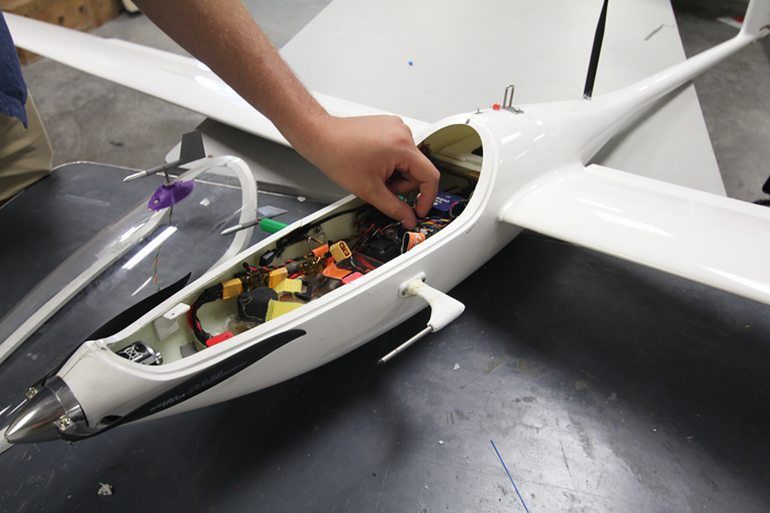Without engines, scientists create a glider to fly in the sky of Mars
A joint research team between the American University of Arizona and the Space and Aviation Agency (NASA) has managed to create a glider without engines that is believed to be a primary research tool on Mars in the coming years, which opens the door for an extensive study of the weather of the Red Planet.
Martian albatross
According to the study published by the team in the journal Aerospace, the new plane weighs only 5 kilograms, and will be able to travel in the atmosphere of Mars for several days at a time, and it will be supported by flight, temperature and gas sensors in addition to cameras.
The technology on which the plane relies is similar to the flight pattern of an albatross bird, which has the longest wingspan in the world of birds with a width of about 3 and a half meters, and it can fly in the sky for a whole year without landing to the ground. As for the new plane, its wingspan together are about 5 meters.
Like the albatross, the new plane will use a technology called dynamic soaring, which takes advantage of increased horizontal wind speed with altitude, a phenomenon particularly common on Mars, to travel quickly and without the need for a power source other than the wind itself.
Mars gliders will have a camera, temperature and gas sensors (University of Arizona)
research challenges
The atmosphere of Mars presents a great challenge for aircraft in general, it is much thinner than the atmosphere of planet Earth, so the ability of air to carry aircraft will be weak.
For this reason, NASA delayed sending the first helicopter to the surface of Mars, the "Ingenuity", which weighs only two and a half kilograms, and the width of a propeller system is about a meter and a quarter, and is the first device to test balanced flight on another planet.
But the problem with Ingenuity - which is powered by solar energy - remains that it can only fly for 3 minutes at a time, and reaches a maximum height of only 12 meters, which means that it does not study the atmosphere accurately.
According to the new study, the new gliders bypass the energy crisis, so they can fly at high altitudes (kilometres) and study the Martian atmosphere better and for a long time.
It will bridge a research gap midway between rovers that study the Martian land and satellites that study it from the outside.
The first few kilometers above the surface of Mars that these planes will study is where all exchanges between the surface and the atmosphere occur, and winds are modified on a large scale, and there isn't a lot of data on the subject, said an official press release issued by the University of Arizona.
The team conducted the launch of an early version of the new glider (University of Arizona)
Ground tests
The research team proposes that these gliders travel to Mars as a secondary payload within a larger mission, then rise to the upper atmosphere on Mars by ejection or via a balloon used in weather and climate experiments on Earth, and then leave to open their arms and take off.
The team has already performed more than one mathematical and computer modeling of the structure and gliding patterns of these vehicles, based on available information about the Martian climate.
Besides, researchers have already begun testing aircraft of this type at an altitude of about 5,000 meters above sea level, where the Earth's atmosphere is thinner and in flight conditions close to those on Mars.
Source: Al Jazeera - translations
https://shahbapress.net/archives/26273?fbclid=IwAR3tpXw-oEpMokhLaQxDweUQURXy1WA5aiLQizw-4qnrwIXmQiEn_lizvYs




